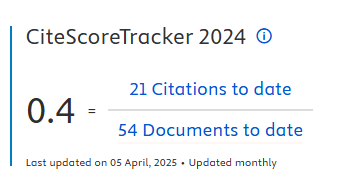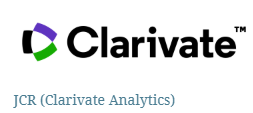Corporate governance as an innovative booster: a literature revision
DOI:
https://doi.org/10.5585/iji.v8i3.15037Keywords:
Governance, Corporate governance, Innovation, Literature Revision.Abstract
Objective of the study: The purpose of this article was to identify the elements to be considered for boosting innovation by the corporate governances, though.
Methodology/approach: It is a literature review, based on the Scopus database, relating the constructs corporate governance and innovation, generating 435 documents in total, using 253 documents imported into the Mendeley application and resulting in 26 documents with effective contributions on governance and innovation.
Originality/relevance: The study differs in that it relates corporate governance to the innovation of organizations.
Main results: The results show that corporate governance has a positive influence on the innovation of organizations, but it is necessary to adapt to the context of each organization and the innovation characteristics of the sector. The first element to be considered is the presence of innovation in the organization's strategy and policies, followed by the commitment, strategic posture and competence of the board for innovation, adaptation of the governance structure, effective management of key competencies for innovation, investment in research and development, financing of innovation and technology, control over investments in innovation and management of risks inherent to innovation.
Theoretical/methodological contributions: The study contributes to the advancement of knowledge by presenting the elements to be considered to boost innovation by corporate governance.
Social/management contributions: It is also indicated that there is an effective management of its key competences for innovation, mapping them and ensuring that the governance structure promotes an environment conducive to their development, in addition to investments in R&D and financing for innovation and technology.
Downloads
References
Al-Mannaei, H. M. H. & Hamdan, A. M. M. (2016). Corporate governance and innovation: Evidence from bahrain bourse. Corporate Board: Role, Duties and Composition, 12(1).
Alencar, E.L.S. (1995). Desenvolvendo a criatividade nas organizações: o desafio da inovação. Rev. adm. empres., São Paulo, 35(6), 6-11.
Alencar, E.L.S. (1998). Promovendo um ambiente favorável à criatividade nas organizações. Rev. adm. empres., São Paulo, 38(2), 18-25.
Alves, L.E.S. (2001). Governança e cidadania empresarial. Rev. adm. empres., São Paulo, 41(4), 78-86.
Andrade, S.P.C., Tolfo, S.R. & Silva, E.M. (2006). A cultura organizacional e a expressão da criatividade no produto moda vestuário infantil: um estudo de caso. In: In: Anais do Encontro da Associação Nacional dos Programas de Pós-graduação e Pesquisa em Administração (EnANPAD). Rio de Janeiro: ANPAD.
Atanassov, J. (2013). Do Hostile Takeovers Stifle Innovation? Evidence from Antitakeover Legislation and Corporate Patenting. Journal of Finance, 68(3).
Baird, A., Furukawa, M.F., Rahman, B. & Schneller, E.S. (2014) Corporate governance and the adoption of health information technology within integrated delivery systems. Health Care Management Review, 39(3).
Belloc, F. (2012). Corporate governance and innovation: A survey. Journal of Economic Surveys, 26(5).
Botelho, L.L.R., Cunha, C.C.A. & Macedo, M. (2011). O método da revisão integrativa nos estudos organizacionais. Gestão e Sociedade, Belo Horizonte, 5(11), 121-136.
Bruno-Faria, M. F., Veiga, H. M. S. & Macedo, L. F. (2008). Criatividade nas organizações: análise da produção científica nacional em periódicos e livros de Administração e de Psicologia. Revista Psicologia: Organizações e Trabalho, Florianópolis, 8(1), 142-163.
Cadbury Report. (1992). The report of the Committee on the Financial Aspects of Corporate Governance. London: The Committee on the Financial Aspects of Corporate Governance and Gee and Co.
Campos, A.C. & Callefi, P. (2009). Arranjos Produtivos Locais de confecção no Paraná: uma análise comparativa. Informe Gepec (Impresso), Toledo, 13(2), 85-103.
Cantista, I. & Tylecote, A. (2008). Industrial innovation, corporate governance and supplier-customer relationships. Journal of Manufacturing Technology Management, 19(5).
Cassiolato, J.E. & Szapiro, M. (2003). Uma caracterização de arranjos produtivos locais de micro e pequenas empresas. In: Lastres H.M.M, Cassiolato, J.E & Maciel M.L. (orgs.). Pequena Empresa: Cooperação e Desenvolvimento Local. Rio de Janeiro: Dumará.
Chiang, S., Lee, P. & Anandarajan, A. (2013). Corporate governance and innovative success: An examination of the moderating influence of a firm’s life cycle stage. Innovation: Management, Policy and Practice, 15(4).
Chouaibi, J., Affes, H. & Boujelbene, Y. (2010). Characteristics of the board of directors and involvement in innovation activities: a cognitive perspective. International Journal of Managerial and Financial Accounting, 2(3), 240–255.
Correia, G. S. & Dellagnelo, E. H. L. (2004). Avaliação do potencial da estrutura para o desenvolvimento da criatividade em uma indústria catarinense. In: Anais do Encontro da Associação Nacional dos Programas de Pós-Graduação e Pesquisa em Administração (EnANPAD). Curitiba: ANPAD.
Damanpour F., Szabat, K.A. & Evan, W.M. (1989). The relationship between types of innovation and organizational performance. Journal Management Studies, 26(6), 587–601.
Dong, J. & Gou, Y.-N. (2010). Corporate governance structure, managerial discretion, and the R&D investment in China. International Review of Economics and Finance, 19(2).
Drejer, A. (2008). Are you innovative enough? International Journal of Innovation and Learning, 5(1).
Fischer, T. (1996). Gestão contemporânea, cidades estratégicas: aprendendo com fragmentos e reconfigurações do local. In: Fischer, T. (org.). Gestão estratégica: cidades estratégicas e organizações local. Rio de Janeiro: FGV.
Fontes Filho, J.R. & Picolin, L.M. (2008, Dez). Governança corporativa em empresas estatais: avanços, propostas e limitações. Rev. Adm. Pública, Rio de Janeiro, 42(6), 1163-1188.
Gilsing, V. (2000). Cluster governance: how clusters can adapt and renew over time. Copenhagen: Department of Business Studies.
Gondim, S.M.G., Loiola, E., Morais, F.A.de, Dutra, S.C.C., Rovira, D.P., Rodrígues, M., Lima, D.C.R.de, & Mourão, L. (2015). Creativity and Innovation as Defined by Worker. REAd. Revista Eletrônica de Administração (Porto Alegre), 21(3), 549-575.
Gu, Y. & Zhang, L. (2017). The impact of the Sarbanes-Oxley Act on corporate innovation. Journal of Economics and Business, 90, 17–30.
Hang, C.C., Neo, K.B. & Chai, K.H. (2006). Discontinuous technological innovations: a review of its categorization. In: Management of Innovation and Technology, IEEE International Conference on, 253-257.
Hasan, I., Raymar, S. & Song, L. (2015). Effects of corporate and country governance on R&D investment: Evidence from emerging markets. Singapore Economic Review, 60(1).
Humphrey, J. & Schmitz, H. (2002). Developing country firms in the world economy: Governance and Upgrad-ing in Global Value Chains. Institut für Entwicklung und Frieden der Gerhard-Mercator-Universität Duisburg.
Instituto Brasileiro de Governança Corporativa [IBGC]. Governança Corporativa: Princípios Básicos. Recuperado em 05 de janeiro, 2017, do http://www.ibgc.org.br/index.php/governanca/governanca-corporativa/principios-basicos.
Instituto Brasileiro de Governança Corporativa [IBGC]. (2015). Código das melhores práticas de governança corporativa. São Paulo: IBGC.
Lee, H., Smith, K.G. & Grimm, C.M. (2003). The effect of new product radicality and scope on the extent and speed of innovation diffusion. Journal of Management, 29, 753-768.
Malacrida, M.J.C. & Yamamoto, M.M. (2006). Governança corporativa: nível de evidenciação das informações e sua relação com a volatilidade das ações do Ibovespa. Rev. contab. finanç., São Paulo, 17, 65-79.
Mayntz, R. (1994). La teoria della governance: sfide e prospettive. Rivista italiana di scienza politica, n. Bulmer 1994, 3–21.
Mcgee, T. (2010). Construindo uma governança urbana colaborativa para as regiões metropolitanas no Brasil e no Canadá. In: Castro, E., Wojciechowski, M.J. (org.). Inclusão, Colaboração e Governança Urbana. Belo Horizonte: PUC Minas.
Miozzo, M. & Dewick, P. (2002). Building competitive advantage: Innovation and corporate governance in European construction. Research Policy, 31(6), 989–1008.
OECD. (2004). Principles of Corporate Governance. OECD Publications Service, 1–178.
Oliveira, A. G., Carvalho, H.A. & Corrêa, D. P. (2013). Governança pública e governabilidade: accountability e disclosure possibilitadas pela contabilidade aplicada ao setor público como instrumento de sustentabilidade do estado. Revista de Educação e Pesquisa em Contabilidade, Brasília, 7(1), 91-104.
Onado, M. (2000). Mercati e intermediari finanziari, “Il Mulino”, Bologna.
Ouedraogo, A. (2008). Managing innovation, human resource and corporate governance in technological SMEs: Lessons from case studies in Canada. Problems and Perspectives in Management, 6(3).
Parolin, S.R.H. & Albuquerque, L.G. (2004). A criatividade, a inovação e a competência dos gestores: suas relações com o comprometimento organizacional. In: Anais do Encontro Anual da Anpad. Rio de Janeiro: ANPAD.
Prencipe, A. (2016). Board composition and innovation in university spin-offs. Evidence from the Italian context. Journal of Technology Management and Innovation, 11(3).
Quintane, E., Casselman, R.M., Reiche, B.R. and Nylund, P.A. (2011) Innovation as a Knowledge‐Based Outcome. Journal of Knowledge Management, 15, 928–947.
Rhéaume, L. & Gardoni, M. (2015). Strategy-making for innovation management and the development of corporate universities. International Journal on Interactive Design and Manufacturing (IJIDeM), 10(1), 73–84.
Rhodes, R.A.W. (1996). The New Governance: Governing Without Government. Political Studies. University of Newcastle-upon-Tyne. 44, 652-667.
Rosenau, J. (1992). Governance, order and change in world politics. In: Rosenau, J. & Czempiel, O. (eds) Governance Without Government: order and change in world politics. Cambridge: Cambridge University Press, 1-29.
Rover, O.J. (2011, Jan-Abr). Obstáculos e exigências para a governança regional. Revista Brasileira de Gestão e Desenvolvimento Regional, Taubaté, 7(1), 130-152.
Sapra, H., Subramanian, A. & Subramanian, K.V. (2014). Corporate governance and innovation: Theory and evidence. Journal of Financial and Quantitative Analysis, 49(4).
Shapiro, D., Tang, Y, Wang, M. & Zhang, W. (2015). The effects of corporate governance and ownership on the innovation performance of Chinese SMEs. Journal of Chinese Economic and Business Studies, 13(4), 311–335.
Schumpeter, J. A. Teoria do desenvolvimento econômico: uma investigação sobre lucros, capital, crédito, juro e ciclo econômico. São Paulo: Nova Cultural, 1997.
Siffert Filho, N. F. (1998, Jul). Governança corporativa: padrões internacionais e evidências empíricas no Brasil nos anos 90. Revista do BNDES. Rio de Janeiro. 5(9), 123-46.
Simantob, M. & Lippi, R.C. (2003). Guia Valor Econômico de inovação nas empresas. São Paulo: Globo.
Talke, K., Salomo, S. & Rost, K. (2010). How top management team diversity affects innovativeness and performance via the strategic choice to focus on innovation fields. Research Policy, 39(7).
Tidd, J., Bessant, J. & Pavitt, K. (2008). Gestão da Inovação. 3. ed. Porto Alegre: Bookman.
Trott, P. (2012). Gestão da inovação e desenvolvimento de novos produtos. 4. ed. Porto Alegre: Bookman.
Tylecote, A. (2007). The role of finance and corporate governance in national systems of innovation. Organization Studies, 28(10).
Tylecote, A. & Conesa, E. (1999). Corporate governance, innovation systems and industrial performance. Industry and Innovation, 6(1).
Tylecote, A.& Ramirez, P. (2006). Corporate governance and innovation: The UK compared with the US and “insider” economies. Research Policy, 35(1).
Visintin, F., Ozgen, B, Tylecote, A. & Handscombe, R. (2005). Italian success and British survival: Case studies of corporate governance and innovation in a mature industry. Technovation, 25(6).
World Bank. (1992). Governance and development. Washington: World Bank.
Wu, H.-L. (2008a). How do board-CEO relationships influence the performance of new product introduction? Moving from single to interdependent explanations. Corporate Governance, 16(2).
Wu, H.-L. (2008b). When does internal governance make firms innovative? Journal of Business Research, 61(2).
Wu, H.-L. & Lee, C.-Y. (2007). The effects of board competence on operational innovation: Tests of universal, contingency and configurational models. International Journal of Technology Management, 39(3-4).
Zhang, Q., Chen, L. & Feng. (2014). T. Mediation or Moderation? The Role of R&D Investment in the Relationship between Corporate Governance and Firm Performance: Empirical Evidence from the Chinese IT Industry. Corporate Governance (Oxford), 22(6).
Downloads
Published
How to Cite
Issue
Section
License
Copyright (c) 2020 Fernanda Kempner-Moreira, Patrícia de Sá Freire, Júlio César Zilli

This work is licensed under a Creative Commons Attribution-NonCommercial-NoDerivatives 4.0 International License.
- Abstract 988
- PDF 733











